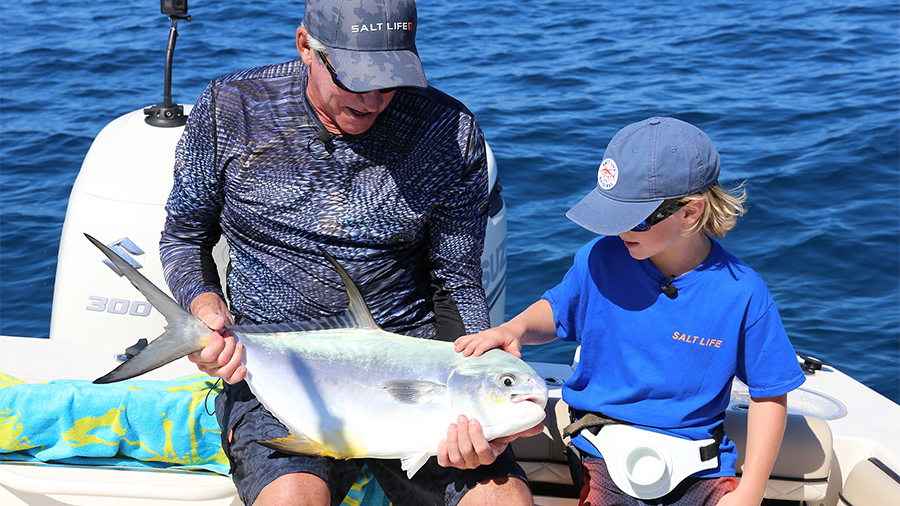At the Shareholder Equity Conference, Delta Apparel, Inc. officials discussed the strong top-line momentum across its legacy activewear segment, DTG2Go and Salt Life. Bob Humphreys, CEO, also said a new collaboration with DTG2Go may soon make Fanatics, the sports fan e-commerce powerhouse, the company’s largest customer.
“We expect it to be our biggest customer at DTG2Go,” said Humphreys about Fanatics. “It might be our biggest customer in any business given a few quarters and the power behind the Fanatics brand with what they’re doing in the market. We’re certainly delighted to be teamed up with them and now that will drive that business.”
In late March, Delta Apparel announced that DTG2Go had expanded its digital print business with new technologies to support quick turnaround in collaboration with Fanatics. With the technology, DTG2Go can produce, package and ship custom orders to the consumer within 24 hours from receipt of an order.
The process supported hot market opportunities following the L.A. Rams’ Super Bowl victory.
Humphreys said the technology would be installed in four of DTG2Go’s eight locations. Besides growth opportunities as Fanatics expands, the partnership provides DTG2Go with more scale and is expected to support a healthy margin. Humphreys noted that Fanatics also owns manufacturing facilities in the U.S. to support market opportunities and business that arrives after a team’s victory or an athlete’s accomplishment.
Humphreys said, “They understand the cost, but we feel good about the long-term commitment and partnership we have with Fanatics that it’s a fair sharing of costs and the viability of the market share in that channel of distribution.”
The investor event came as Delta Apparel has shown a healthy bounce-back after the initial stages of the pandemic had depressed results with strong demand for its activewear and embellishment services.
In its fiscal year ended October 2, 2021, sales were $436.8 million, up 14.6 percent year-over-year. In the first quarter ended January 1, sales grew 17 percent. Delta Apparel, earlier this week, said it expects a 20 percent revenue increase in its March quarter.
In the March quarter, double-digit sales growth is expected in both the Delta Group and Salt Life Group segments to build on strength over the last year.
At the Delta Group segment, which provides black t-shirts for the screenprinting industry and embellished apparel for major athletic vendors and retailers, sales increased 13 percent to $387.0 million in fiscal 2021 and gained 16 percent in its fiscal first quarter.
Humphreys said its basic activewear business in Delta Group is “stronger than it’s ever been,” with unit growth in the business this year running up in the high-single-digits. The activewear segment is also “the most profitable it has ever been in our history.”
Humphreys said one of the key foundations of Delta Apparel’s business is its vertically- integrated supply chain, with most production done in Central America and Mexico. He said the strength in the business, in part, reflects the greater interest in nearshoring. He said, “Our customers, end retailers and end consumers are looking for product made in this hemisphere. It’s closer to market, ready for current consumer taste and offers transparency on where raw materials are coming from, labor standards and what have you. So we see that as a changing tide from the last couple of decades where our customers and end customers are looking strongly for more product made in this hemisphere.”
The CEO said Delta Apparel continues to invest in expanding capacity in the activewear portion of the business to support strong demand.
DTG2Go, its digital-print business, saw sales climb 17 percent over the prior year in the fiscal first quarter with new customer launches. Humphreys admitted that growth in the digital print business has been slower than he expected. He said, “When we started 14-or-15 years ago, I thought, ‘Well, every t-shirt that’s printed could ultimately be printed digitally.’”
However, the DTG2Go business started gaining traction with e-tailers. Only recently have retailers such as Fanatics and other IP (intellectual property) owners begun looking to take advantage of DTG2Go’s flexible digital capabilities. Four of DTG2Go’s eight facilities have also installed Polaris machines to support high-volume direct-to-garment printing. Said Humphreys, “I think we’re in a new chapter that’s just beginning and growth will continue to accelerate.”
At Salt Life, sales in the last fiscal year reached $49.7 million, up 34 percent year over year, with a 24 percent gain delivered in the fiscal first quarter.
Humphreys said Delta had been surprised by Salt Life’s robust recovery in its wholesale business with traditional retailers and boutiques near the coasts. He said, “We thought we would lose smaller retailers to bankruptcy, and larger retailers have had some struggles. But people have come back very strongly in the wholesale channel on the Salt Life business.”
Supporting the strength at wholesale has presented challenges for Salt Life in reaching its ambitious retail growth goals as Salt Life continues to aggressively add locations. It currently has 15 locations with plans to add another four before the company’s September fiscal year-end.
E-commerce at Salt Life has been flat over the last couple of quarters as the lifestyle brand has been channeling inventory to support wholesale and physical store growth. Humphreys said, “We’ve made some structural changes to support that in ensuing years and expect our website sales to start accelerating again.”
As far as Salt Life’s growth potential, Humphreys points to the surf brand’s strong engagement with fans across social media platforms. He said, “If you look at their social media engagement, it way outweighs the current revenue of the brand. So it just gives us confidence that the consumer loves Salt Life, they love thinking about Living the Salt Life, and they’re looking for more and more product.”
Asked about supply chain challenges, Humphreys said that while Delta Apparel doesn’t source from Asia, it’s still facing challenges around ocean freight, securing raw materials, and rising costs of yarn, cotton, dyes, and chemicals, and packing supplies. While not an issue in its plants in Honduras, El Salvador and Mexico, labor constraints are impacting its digital printing, packing or some screen printing facilities in the U.S. Escalating energy prices are also adding to margin pressures.
Inventories are elevated compared to historical levels as port process times are estimated to be up at least 50 percent versus pre-pandemic levels.
Humphreys said, “Our teams over the last almost two years now but certainly 18 months have done a magnificent job of managing through this at every step of the way. And we continue to be able to produce more than we thought we would be able to, which has been driving some of our sales growth that we’ve enjoyed over the last five or six quarters.”
Humphreys said Delta Apparel has been able to pass along the higher input costs by increasing prices to preserve operating margins. For instance, undecorated t-shirt pricing has increased in the range of 12 percent to 13 percent.
“We make decisions daily,” said Humphreys. “The big pieces of our business we can change pricing daily and do so. And then on some pieces, we have longer-term commitments to customers.”
Photo courtesy Delta Apparel/Salt Life
















